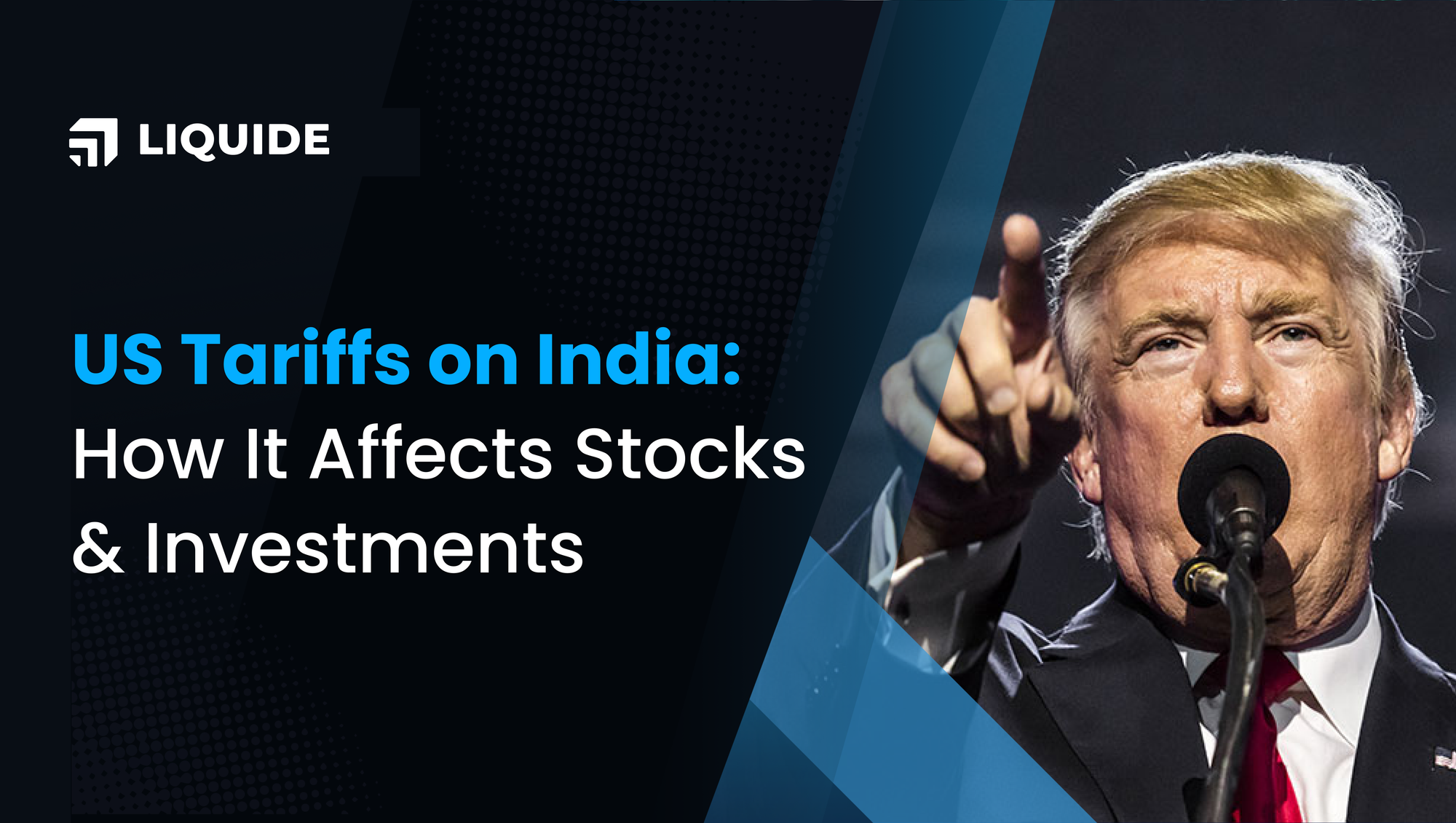US Tariffs on India: How It Affects Stocks & Investments
US President Donald Trump's surprise 25% tariff on Indian goods is a major shakeup for the economy, pushing markets down and sending the rupee to record lows. Discover how this affects India's exports, investor sentiment and what actions you can take as an investor.

Stock Market News | In an unexpected move, US President Donald Trump imposed a 25% tariff on Indian goods and threatened unspecified penalties over India's defence and energy ties with Russia. This caused a gap-down opening in the Indian equity markets and pushed the rupee to a record low.
The announcement has sparked concerns about its potential impact on the economy, businesses and investors. Let’s break it down and analyse the real implications.
The Tariff Surprise
Before the announcement, there was an expectation that the US would impose tariffs on India in the range of 15-20%, in line with recent trade deals with Japan, the EU, Indonesia and Vietnam. However, Trump’s decision to slap a 25% tariff on Indian goods came as a major surprise. This is a major jump from the previous 3% average tariff on Indian goods in the US before April 2, and the 10% interim tariff imposed earlier this year.
This is a significant shift, both in absolute terms and in comparison with other countries that are part of ongoing trade negotiations. This move has put India in a tough spot, with the threat of declining exports and slower economic growth. While the government and markets had prepared for tariffs, the actual percentage was far beyond expectations.
What Does This Mean for India’s Exports?
The big question is how this tariff hike will affect India’s exports. Countries like the US have traditionally been major trading partners for India, especially in sectors such as pharma, gems and jewellery, electronics and electric equipment.
While some sectors are still unclear about whether they’ll be exempted from tariffs (such as pharma and electronics), the fear of increased levies looms large. Exports will face more competition from newer countries and emerging markets, making it difficult for Indian companies to maintain their market share.
But here's the thing: Trump’s tariffs aren’t the end of the world. There’s still a chance that India could impose retaliatory tariffs on American goods. However, with India standing firm on issues like agriculture and dairy, it looks like this standoff could drag on.
The real question is whether Indian companies will seize the new opportunities that might come up. Looking at countries like the UK, EU, Japan, Indonesia and Vietnam, who’ve already struck deals with the US, we see that tariffs remain high, and in exchange, these countries have made some concessions to the US.
The hope is that once global tariffs are finalised, India could come out ahead, especially compared to China. But let’s not forget, China has its own advantages, like control over rare earths and critical minerals, giving it an upper hand in these negotiations.
What’s Next for Indian Investors?
It’s tricky to predict the long-term effects, especially with global trade dynamics constantly in flux. While tariffs will undoubtedly put pressure on exports and growth, trade negotiations are complex and we’re still unsure whether certain sectors will get an exemption.
Plus, the actual level of the penalty hasn’t been fully disclosed yet and that could make a huge difference in how it impacts India Inc. Whether this is all part of a bigger bargaining strategy remains to be seen.
Given all the variables in play, it's hard to say what the future holds. The best approach right now is to stay on top of the data, assess each new development and navigate the uncertainty as it unfolds. While there will be winners emerging from India Inc, there will be some losers as well.
How Should You Respond as an Investor?
The market's knee-jerk reaction to the recent news may have many investors wondering if it's time to "buy the dip." Markets that were expected to show recovery due to factors like a good monsoon, rural recovery and urban consumption might now face additional pressure.
If you’re a savvy investor, the best approach would be to adopt an opportunistic stance. Instead of panicking, consider accumulating stocks in tranches as the market corrects by 5% or more. Markets move on anticipation, not confirmation. Waiting for perfect clarity often means missing the opportunity. While the long-term impact of these tariffs remains uncertain, there will undoubtedly be opportunities for those who make data-driven decisions.
The Importance of Diversification
With the current market volatility, diversification is more important than ever. Depending on your risk appetite, it might be a good idea to focus on sectors that are less sensitive to external shocks. Domestic-focused sectors—like consumer goods, banking and NBFCs—could offer better resilience compared to export-heavy industries that might take a bigger hit from these tariffs.
While the 25% tariff imposition by the US has undoubtedly added a layer of uncertainty to the Indian market, it’s crucial for investors to stay focused on the fundamentals.
The key is to stay informed, monitor global trade developments and make strategic, data-driven decisions. If you’re unsure about how to approach this, consider leveraging Liquide Wealth Baskets, which are regularly rebalanced to keep your portfolio aligned with market conditions. Instead of trying to time the market, opt for Systematic Investment Plans (SIPs) to invest in these diversified baskets, which will help you spread your risk wisely.

